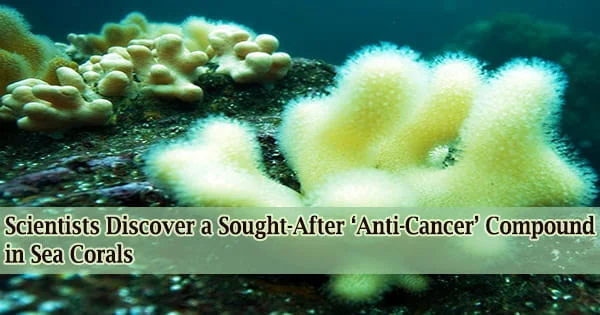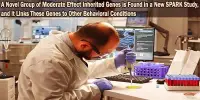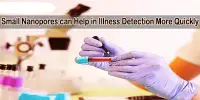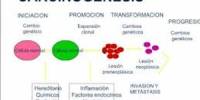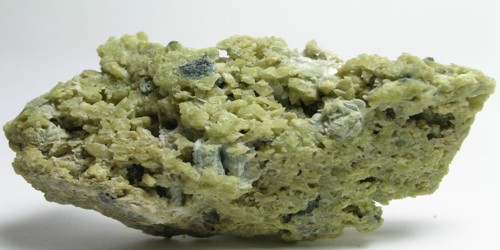The ocean’s depths are teeming with mysteries, but scientists have recently unearthed one of the ocean’s best-kept secrets. For the past 25 years, researchers have been looking for the source of a natural chemical that has shown promise in preliminary cancer research.
Researchers from the University of Utah Health have discovered that the elusive substance is made by soft corals, which are flexible corals that resemble underwater plants.
The researchers were able to go one step further after identifying the source and discovering the animal’s DNA coding for producing the chemical. They were able to carry out the first steps of re-creating the soft coral chemical in the laboratory by following those directions.
“This is the first time we have been able to do this with any drug lead on Earth,” says Eric Schmidt, Ph.D., professor of medicinal chemistry at U of U Health. He led the study with Paul Scesa, Ph.D., postdoctoral scientist and first author, and Zhenjian Lin, Ph.D., assistant research professor.
The breakthrough paves the way for large-scale production of the molecule, which could lead to the development of a novel cancer-fighting tool in the future.
A second study led by Bradley Moore, Ph.D. of the Scripps Institution of Oceanography at the University of California, San Diego, found that corals produce similar chemicals. Both studies were published in Nature Chemical Biology on 23rd May 2022.
A World of Possibilities
Thousands of drug-like chemicals found in soft corals could be used as anti-inflammatory medicines, antibiotics, and more. However, acquiring enough of these molecules has been a big roadblock to turning them into clinically useful medications. According to Schmidt, this new method should now be able to reach these additional chemicals as well.
This is the first time we have been able to do this with any drug lead on Earth.
Eric Schmidt
Corals aren’t the only animals with therapeutic promise. Snakes, spiders, and other animals believed to possess compounds with therapeutic powers abound in nature. Soft coral compounds, on the other hand, provide different advantages for medication development, according to Schmidt.
Unlike venomous compounds injected into animals, corals use their chemicals to protect themselves from predators. The soft coral compounds are easily digestible because they are designed to be eaten. Likewise, medications developed from these substances should be able to be taken as pills with a glass of water rather than through injection or other more invasive methods.
“These compounds are harder to find but they’re easier to make in the lab and easier to take as medicine,” says Schmidt.
For decades, these possibilities have been just out of grasp. It needed the correct knowledge and a little luck to get to this stage.
Hunting for the Source
Scesa discovered the long-sought chemical in a common soft coral species off the coast of Florida, about a mile from his brother’s residence. Marine biologists discovered an anti-cancer compound called eleutherobin in a rare coral near Australia in the 1990s.
Soft corals employ the chemical to damage the cytoskeleton, a crucial framework in cells, as a defense against predators. However, laboratory tests revealed that the chemical was also a powerful cancer cell growth inhibitor.
Scientists searched for the famous “holy grail” molecule in the proportions required for therapeutic development for decades, but were unable to solve the problem without first understanding how it was generated. According to popular belief, the chemical was produced by symbiotic organisms living inside the creatures, just like other types of marine life.
“It didn’t make sense,” Scesa says. “We knew that corals must make eleutherobin.”
After all, he and Schmidt reasoned, certain soft coral species lack symbiotic creatures but possess the same chemical class in their bodies.
Scesa appeared to be the right person for the job. The ocean was his playground as a kid growing up in Florida, and he spent many hours exploring its depths and animals. He developed an interest in organic chemistry in graduate school and integrated the two pursuits to better comprehend the chemical variety of the seas.
Later, he joined natural products scientist Schmidt’s lab with the goal of locating the source of the medication lead. Scesa felt that coral species he was familiar with might hold the key, so he flew small live samples from Florida to Utah, where the true hunt began.
Decoding the Recipe
The next step was to see if the genetic code of the coral contained instructions for manufacturing the chemical. Recent advances in DNA technology have made it possible to piece together the genetic code of any animal quickly.
The problem was that the scientists didn’t know how to make the chemical since they didn’t know what the instructions should look like. Imagine looking for a certain dish in a cookbook but having no idea what any of the phrases imply.
“It’s like going into the dark and looking for an answer where you don’t know the question,” remarks Schmidt.
They solved the challenge by looking for areas of coral DNA that looked like genetic instructions for comparable substances in other species.
The microbes were able to duplicate the first steps of manufacturing the potential cancer therapeutic after being programmed to follow coral DNA instructions particular to the soft coral.
This revealed that eleutherobin comes from soft corals. It also demonstrated that the substance should be possible to make in the lab. Their current study focuses on filling in the gaps in the compound’s recipe and discovering the most efficient technique to generate huge quantities of the potential medicine.
“My hope is to one day hand these to a doctor,” says Scesa. “I think of it as going from the bottom of the ocean to bench to bedside.”
Ancient defensive terpene biosynthetic gene clusters in soft corals was published in Nature Chemical Biology with funding from the National Institutes of Health and the ALSAM Foundation.
